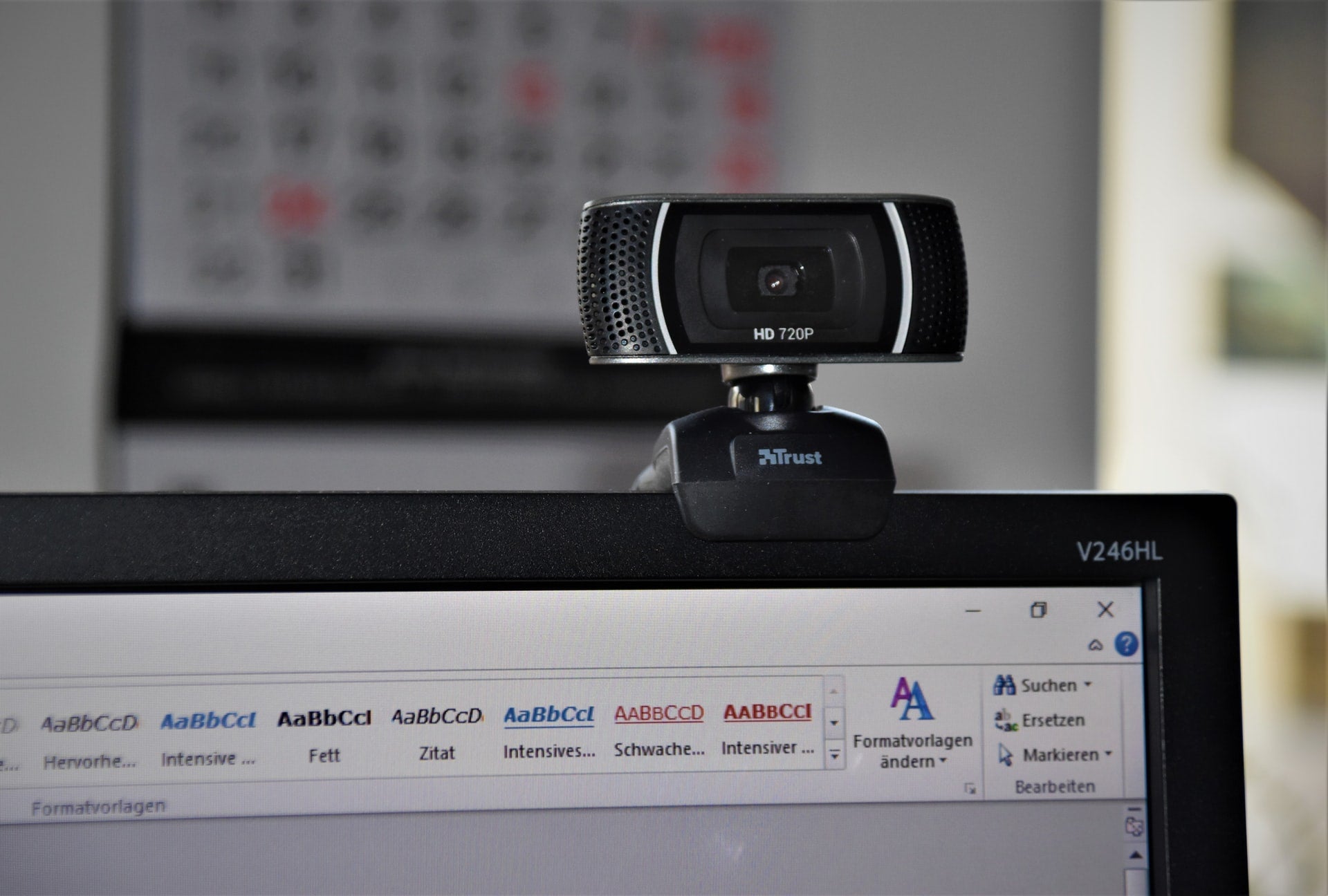Before the pandemic struck, you might have been on the occasional video call with colleagues in far-flung places, but most of your interactions probably took place in person. But once lockdowns were put in place, shelter-at-home orders were issued, and offices were closed, Zoom, Microsoft Teams, and other video platforms became essential. As convenient as such tools are, we’re now starting to realize that talking via screens five days a week has some pitfalls. In this piece, we’ll help you overcome hypergaze, mirror anxiety, and the other aspects of video conferencing that can leave you feeling wiped out by the time 5 PM rolls around.
Avoid Hypergaze
The term hypergaze sounds like an old Nintendo game from the 80s that deserves a retro release. In this age of remote work, it’s a relatively new phenomenon that occurs during seemingly endless video meetings. “In a normal work meeting of about 10 people, everyone is talking, looking at notes, perhaps typing,” Jeremy Bailenson, founding director of Stanford University’s Virtual Human Interaction Lab, wrote in an op-ed for The Wall Street Journal. “But the time spent in mutual gaze—looking directly into the eyes of one another—is tiny. When it occurs, it lasts only a few seconds. With Zoom, a 10-person meeting is often set up in a grid that reminds us of “The Brady Bunch.” Each person stares right at you from the screen for the entire meeting. This has advantages—people are forced to pay attention. But it is also draining.”
This is one of the reasons you finish back-to-back video calls feeling mentally destroyed. Hypergaze forces a level of sustained attention that might be apt for a neurosurgeon, soldier, or airline pilot, but not for the typical knowledge worker. Another reason that hypergaze consumes so much brainpower is that it violates an underlying principle of our hardwired biology that regulates how we respond to physical proximity. “From an evolutionary standpoint, if somebody was very close to you and staring right at you, this meant you were going to mate or get in a fight,” Bailenson told The New York Times.
So what’s to be done about hypergaze, given that your colleagues – and, if you also do family video calls, your grandma – aren’t going to appreciate you averting eye contact during meetings? “Some groups that we’ve been talking to have said, ‘Let’s all turn our videos on for the first five minutes of a call, connect as humans, and then turn it off,’” Mollie West Duffy, co-author of No Hard Feelings: The Secret Power of Embracing Emotions at Work said in the same New York Times article. “Or telling your team which meetings should have video on and which meetings can have video off. The default has just become video on, and it doesn’t need to be that eight hours a day.”
Another way to mitigate hypergaze is to position your laptop or tablet a bit further away from your face. If you were in a conference room with your colleagues, it’s unlikely you’d be looking into each other’s eyes from just a few inches away – unless of course you’re into awkward silences and Michael Scott-style HR violations. So try to put the same thinking into practice with your video calls and take a couple of extra steps back so you’re not all up in everyone’s business. If you need to be close enough to type, then consider adding an external webcam to your home office setup.
End Mirror Anxiety
Another reason that continual video calls are so exhausting is that they make us feel like we’re being over-scrutinized by fellow meeting participants. Those with chronic social anxiety might feel this way in everyday interactions, but the feeling of being watched is amplified dramatically for everyone on Zoom. Beyond simply wanting to look presentable for a video meeting (which wouldn’t be such a concern if you were preparing for an audio-only call on some old-fashioned communication device like a telephone), we can start to fixate on that lock of hair falling in our eyes, the collar that’s at an odd angle, and other minute details that we feel will be judged by the people hypergazing at us.
Research conducted by Bailenson, his colleagues at Stanford, and Géraldine Fauville from the University of Gothenburg concluded that women typically experience the stress of being watched more acutely than men. “The researchers found that this constant, real-time reflection can cause what’s known as mirror anxiety,” Theresa Machemer wrote in a piece for National Geographic. “This condition is a stressful self-consciousness that causes distractions and that has been linked to increased anxiety and depression.” Once you notice one perceived flaw in your appearance, it’s hard not to get obsessed with it and let this suddenly important thing draw your attention away from what others are saying. “We’re forced to confront ourselves on camera—flaws, unflattering lighting, and all—and we can’t avert our eyes, even if we find a gargoyle staring back at us,” Chloe Hadavas wrote in a Slate article.
Fortunately, there’s a fairly easy solution to the problem of mirror anxiety: turn off the function that lets you look at yourself. In Zoom, simply click on the three dots that appear if you hover over the top right of your video feed and choose “Hide Self View.”
Meet in Person
In a recent newsletter, author of The Subtle Art of Not Giving a F*ck Mark Manson wrote, “We’ve long known that the human mind relies on social connections to function properly. Face-to-face social contact maintains our mental and emotional health the same way changing the oil in your car or cleaning all the crap off your hard drive keeps them running smoothly. It is necessary for our brains to function properly.” He went on to cite a study published in Applied Cognitive Psychology that found social isolation impairs cognitive function or – as Manson put it, “makes people dumber.”
The study authors wrote that, “Social interactions with others involve mental stimulation, hence frequent social interaction may protect or enhance cognitive function.” They also noted that regular face-to-face meetings improve attention, working memory, decision-making, and learning, not to mention emotional wellbeing. So while certain COVID-19 restrictions might mean that your office is still closed, when possible, you should try to conduct your personal and business-related conversations in person (taking the necessary precautions). This might take a while to get used to if you’ve been self-isolating for a long time, but the social connection will give you and the people you get together with an all-around boost.



















